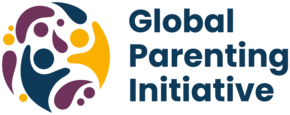Orphanhood and Caregiver Loss Among Children Based on New Global Excess COVID-19 Death Estimates
JAMA Pediatrics
Authors: S. Hillis, J. P. N. N’konzi, W. Msemburi , L. Cluver, A. Villaveces , S. Flaxman, & H. J. T. Unwin
Background:
The availability of new excess mortality data enables us to update global minimum estimates of COVID-19 orphanhood and caregiver death among children.1-4 Consequences for children can be devastating, including institutionalization, abuse, traumatic grief, mental health problems, adolescent pregnancy, poor educational outcomes, and chronic and infectious diseases.4,5 Global totals and country comparisons were previously hampered by inconsistencies in COVID-19 testing and incomplete death reporting. The new orphanhood estimates derived here based on excess deaths provide a comprehensive measure of COVID-19’s long-term impact on orphanhood and caregiver loss.
Methods:
Using previous methodology for combining age-specific death and fertility rates,4 we use Guidelines for Accurate and Transparent Health Estimates Reporting (GATHER) reporting guideline for this epidemiologic modeling study to update COVID-19 estimates of parent and caregiver loss. We computed excess mortality-derived estimates for bereft children in every country, using data from the World Health Organization (WHO), The Economist, and the Institute for Health Metrics and Evaluation (IHME).1-3,6 We replaced COVID-19 deaths in previous logistic models with excess deaths (except when excess deaths were negative) to generate composite deaths for January 1, 2020, through December 31, 2021, and for January 1, 2020, through May 1, 2022 (eMethods in the Supplement; Table). We used bootstrapping to calculate uncertainty around estimates from fertility and death data. We present regional and national estimates using WHO-based mortality methods.
Results
Using WHO excess mortality (more conservative than findings from IHME and The Economist), we estimate that 10 500 000 children lost parents or caregivers (Table), and 7 500 000 children experienced COVID-19–associated orphanhood through May 1, 2022. Greater numbers affected by orphanhood by primary and/or secondary caregiver loss were found in the Africa (24.3% [95% credible interval [CI], 19.3%-27.6%]) and Southeast Asia (40.6% [95% CI, 35.3%-46.2%]) WHO regions, compared with the Americas (14.0% [95% CI, 12.6%-15.8%]), Eastern Mediterranean (14.6% [95% CI, 12.9%-16.2%]), European (4.7% [95% CI, 4.4%-5.3%]) and Western Pacific (1.8% [95% CI, 1.7%-1.9%]) regions through May 1, 2022 (Figure A). Similarly, variation in estimates arises at national levels, with India (3 490 000 [95% CI, 2 430 000-4 730 000]), Indonesia (660 000 [95% CI, 390 000-1 020 000]), Egypt (450 000 [95% CI, 360 000-540 000]), Nigeria (430 000 [95% CI, 40 000-900 000]), and Pakistan (410 000 [95% CI, 80 000-770 000]) worst affected through May 1, 2022 (Figure B). Among the WHO regions most affected, countries with the highest numbers of bereaved children in Southeast Asia included Bangladesh, India, Indonesia, Myanmar, and Nepal and in Africa included Democratic Republic of Congo, Ethiopia, Kenya, Nigeria, and South Africa. Our updated Orphanhood Calculator6 provides these new numbers for every country.
Discussion
COVID-19–associated orphanhood and caregiver death has left an estimated 10.5 million children bereaved of their parents and caregivers. While billions of dollars are invested in preventing COVID-19–associated deaths, little is being done to care for children left behind. However, billions of dollars invested in supporting AIDS-orphaned children showcase successful solutions ready for replication.4 Only 2 countries, Peru and the US, have made national commitments to address COVID-19–associated orphanhood. At the 2nd Global COVID-19 Summit (May 12, 2022), President Biden emphasized the urgency of caring for the millions of children orphaned. Urgently needed pandemic responses can combine equitable vaccination with life-changing programs for bereaved children. An important limitation is that modeling estimates cannot measure actual numbers of children affected by caregiver death; future pandemic surveillance should include such children. Given the magnitude and lifelong consequences of orphanhood, integration into every national pandemic response plan of timely care for these children will help mitigate lasting adverse consequences. Evidence highlights 3 essential components: (1) prevent death of caregivers by accelerating vaccines, containment, and treatment; (2) prepare families to provide safe and nurturing alternative care; and (3) protect orphaned children through economic support, violence prevention, parenting support, and ensuring school access. Effective, caring action to protect children from immediate and long-term harms of COVID-19 is an investment in the future and a public health imperative.
Link: https://jamanetwork.com/journals/jamapediatrics/fullarticle/2795650



